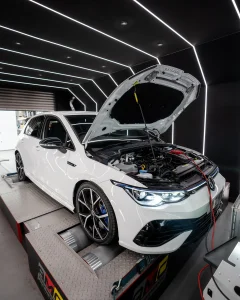When it comes to car maintenance and upgrades, aftermarket car parts offer a huge range of options beyond what’s available from the original equipment manufacturer (OEM). Whether you’re a car enthusiast looking to enhance performance or a budget-conscious driver seeking cost-effective repairs, aftermarket parts can be an attractive choice. However, they come with their own set of benefits and potential drawbacks.
What Are Aftermarket Car Parts?
Before diving into the pros and cons, let’s clarify what aftermarket car parts are. Aftermarket parts are components made by companies other than the vehicle’s original manufacturer. They are designed to replace or enhance parts originally provided by the car maker. Aftermarket parts can range from basic components like brake pads and filters to high-performance motor upgrades such as turbochargers and suspension systems.
The Pros of Aftermarket Car Parts
1. Cost Savings
One of the most appealing aspects of aftermarket parts is their cost. Generally, aftermarket parts are less expensive than OEM parts. This price difference can be substantial, making them a popular choice for budget-conscious consumers. The savings come from various factors, including reduced manufacturing costs and less brand markup.
2. Increased Variety and Customisation for Vehicles
Aftermarket parts provide a vast range of options, allowing for greater customisation of your vehicle. Whether you’re looking to upgrade your exhaust system for a sportier sound, install custom rims, or improve your car’s performance with a new air intake system, aftermarket parts offer a variety of choices to suit your preferences and style.
When you shop for these parts, you can explore diverse departments dedicated to performance upgrades, often with free delivery and the lowest price guarantee to ensure customer satisfaction.
3. Enhanced Performance
For those interested in boosting their vehicle’s performance, aftermarket parts can be a great solution. High-performance aftermarket components, such as high-flow air filters, performance brakes, and upgraded suspension systems, can improve handling, acceleration, and overall driving experience. Many aftermarket manufacturers specialise in performance parts, offering innovations that might not be available from OEM suppliers. Additionally, specialist workshops with extensive expertise in high-performance tuning and bespoke projects can ensure that these components are installed and optimised to deliver the best possible results.
4. Availability
Aftermarket parts are often more readily available than OEM parts, especially for older or less common vehicles. This is due to the high number of manufacturers producing these parts. Whether you’re in need of a replacement part or looking to upgrade, aftermarket parts can often be sourced quickly and conveniently.
5. Innovation and Technology
Many aftermarket parts come from companies that focus on innovation and cutting-edge technology. These manufacturers often push the envelope with new designs and materials, offering enhancements that might not yet be available from OEMs. If you’re interested in the latest advancements, aftermarket parts can be a gateway to the newest technology in automotive components.
The Cons of Aftermarket Car Parts
1. Quality Variability
One of the biggest concerns with aftermarket parts is the variability in quality. While some aftermarket parts are high-quality and well-engineered, others may be subpar or poorly made. This inconsistency can lead to issues such as premature wear, poor fit, or even damage to your vehicle. It’s crucial to research and select reputable aftermarket brands to avoid these pitfalls.
2. Warranty Concerns
Using aftermarket parts can sometimes affect your vehicle’s warranty. While the Magnuson-Moss Warranty Act in the U.S. protects consumers’ rights to use aftermarket parts, some manufacturers may claim that certain aftermarket components void the warranty. It’s essential to check with your vehicle’s manufacturer or dealership to understand how aftermarket parts may impact your warranty coverage.
3. Compatibility Issues
Not all aftermarket parts are guaranteed to fit perfectly or function as intended. Compatibility issues can arise, leading to difficulties during installation or potential problems while driving. It’s important to verify that the aftermarket part is specifically designed for your vehicle make and model to ensure proper fit and performance. Entering your number plate can help confirm compatibility and provide tailored recommendations.
4. Potential for Increased Maintenance
Some aftermarket parts may require more frequent maintenance or adjustment compared to OEM parts. For example, high-performance parts might have different maintenance needs or could be more sensitive to changes in driving conditions. Be prepared for additional upkeep and potential adjustments if you choose to install aftermarket components.
5. Resale Value Impact
Upgrading your vehicle with aftermarket parts can sometimes affect its resale value. While some modifications may enhance the car’s appeal to certain buyers, others might detract from its value or make it less attractive to potential buyers who prefer original components. It’s a good idea to consider how aftermarket modifications might impact the resale value of your vehicle if you plan to sell it in the future.
How to Choose Aftermarket Parts Wisely
Given the potential pros and cons, here are some tips for selecting aftermarket parts that align with your needs and preferences:
1. Research Reputable Manufacturers
Before purchasing aftermarket parts, research brands with a solid reputation for quality and reliability. Look for reviews from other customers and check if the manufacturer offers warranties or guarantees on their products. Brands with a history of positive feedback are more likely to provide high-quality components.
Additionally, consider creating an account to add your vehicle information to a section like ‘My Garage,’ which can enhance your shopping experience and streamline communications regarding your vehicle.
2. Verify Compatibility
Ensure that the aftermarket part you’re considering is specifically designed for your vehicle’s make, model, and year. Check compatibility charts or consult with a professional to confirm that the part will fit and function correctly with your vehicle. Tailoring your choices to your specific ride ensures proper fit and function.
3. Consult Professionals
If you’re unsure about which aftermarket parts to choose, consider consulting with a mechanic or automotive specialist. They can offer expert advice on the best options for your vehicle and help ensure that the parts you select will meet your needs and perform as expected.
4. Consider the Impact on Warranty
Review your vehicle’s warranty terms before installing aftermarket parts. If you’re concerned about how modifications might affect your warranty, discuss your plans with the dealership or manufacturer to avoid any potential issues.
5. Balance Cost and Quality
While cost savings are a significant advantage of aftermarket parts, don’t compromise on quality. Sometimes, spending a little more on a reputable part can save you money in the long run by avoiding issues and ensuring better performance.
Aftermarket car parts offer a range of benefits, from cost savings and customisation options to enhanced performance and availability. However, they also come with potential drawbacks, such as quality variability and compatibility issues. By carefully researching brands, verifying compatibility, and considering the impact on your vehicle’s warranty, you can make informed decisions and enjoy the advantages of aftermarket components while minimising potential downsides.
Ultimately, whether you choose aftermarket parts for repairs, maintenance, or upgrades, understanding the pros and cons will help you make choices that best suit your vehicle and driving needs.



